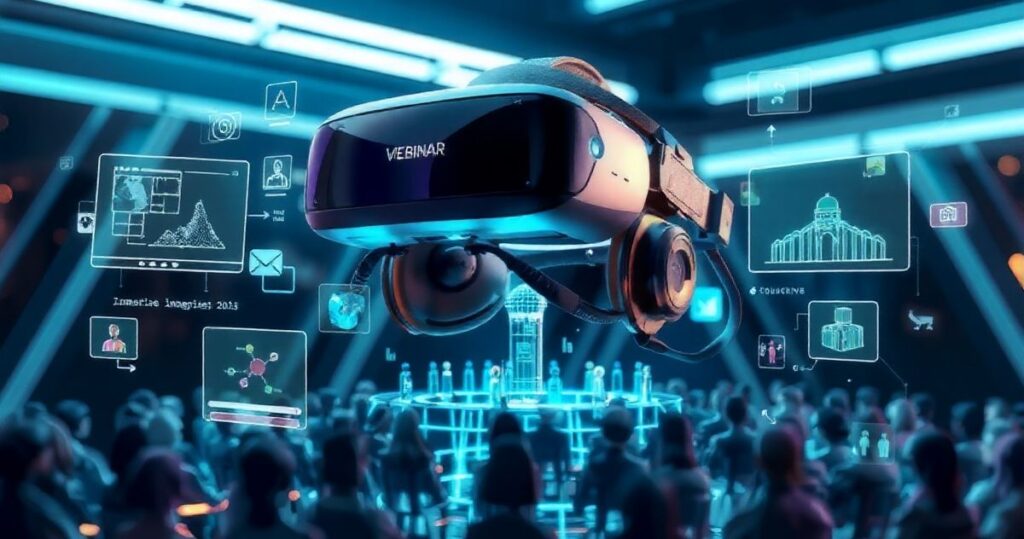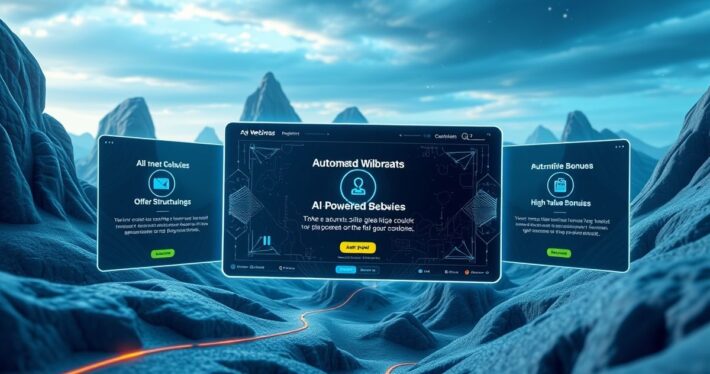From AR to VR: AI-driven tools for immersive webinars.

From AR to VR: AI-Driven Tools for Immersive Webinars
In today’s digital landscape, webinars have become a cornerstone of marketing strategies, lead generation, and audience engagement. But let’s be honest—traditional webinars can sometimes feel stale. Enter AI-driven AR (Augmented Reality) and VR (Virtual Reality) tools, which are transforming the way we create and experience webinars. These technologies aren’t just buzzwords; they’re game-changers for crafting immersive, high-converting webinar experiences. Whether you’re a seasoned marketer or a newbie creator, this guide will show you how to leverage these tools to captivate your audience and drive results.
Why Immersive Webinars Matter
Think about the last webinar you attended. Was it memorable? Or did it blend into the sea of PowerPoint slides and talking heads? The truth is, attention spans are shrinking, and audiences crave experiences that go beyond passive consumption. Immersive webinars—powered by AR and VR—offer a solution. They create environments where participants don’t just watch; they engage.
AI amplifies this by automating complex tasks, personalizing content, and enhancing interactivity. The result? Webinars that feel less like lectures and more like dynamic, interactive events. And here’s the kicker: you don’t need a massive budget or a team of developers to pull this off. Modern AI tools make it accessible for anyone.
AI-Driven AR Tools: Bringing Webinars to Life
Augmented Reality overlays digital elements onto the real world, making it perfect for adding interactive layers to your webinars. AI-driven AR tools can enhance presentations, create virtual product demos, and even gamify your content.
Example: Imagine hosting a webinar for a new fitness app. With AR, participants can see a virtual trainer demonstrating exercises right in their living room. AI can tailor the workout based on their fitness level, creating a personalized experience.
Tools to Explore:
- Slide Outline Creator (AR-enhanced): Adds interactive 3D elements to your slides, keeping your audience engaged.
- High-Value Bonus Brainstormer (AR integration): Visualizes bonus offerings in AR, making them more tangible and appealing.
VR Tools: Immersive Environments Made Easy
Virtual Reality takes immersion to the next level by transporting participants into a fully digital environment. AI-powered VR tools can create lifelike settings for your webinars, such as virtual auditoriums, product showrooms, or even simulated scenarios.
Case Study: A tech company used a VR webinar to demo their software. Attendees “stepped” into a virtual office where they could interact with the product in real-time. The result? A 35% increase in post-webinar conversions.
Tools to Explore:
- Webinar Offer Builder (VR integration): Crafts interactive pricing and value-stacking displays within a virtual space.
- Guarantee Generator (VR-enhanced): Lets attendees “step into” a risk-free trial period, making guarantees more compelling.
Balancing Education and Engagement
One of the biggest challenges with immersive webinars is finding the right balance between education and entertainment. Too much “wow factor” can overshadow your message, while too little can make your webinar forgettable. Here’s where AI shines. It can analyze audience behavior in real-time, adjusting the level of interactivity to keep engagement high without sacrificing content depth.
Pro Tip: Use AI to segment your audience during the webinar. For example, tech-savvy users might enjoy a VR-heavy experience, while others might prefer AR-enhanced slides. Personalization is key.
Real-World Applications
Let’s look at how these tools can be applied across industries:
- Education: Host virtual classrooms where students can interact with 3D models or AI tutors.
- Retail: Create virtual showrooms where customers can “try on” products or explore bundles.
- Corporate Training: Use VR to simulate real-world scenarios for hands-on learning.
Overcoming Challenges
While immersive webinars offer incredible potential, they’re not without challenges. Technical issues, audience resistance to new tech, and the learning curve for creators can all be hurdles. However, AI tools are designed to simplify the process. They handle the heavy lifting, from content creation to real-time adjustments, so you can focus on delivering value.
The Future of Webinars: AI, AR, and VR Working Together
The synergy between AI, AR, and VR is reshaping the webinar landscape. As these technologies evolve, we’ll see even more seamless integrations and innovative applications. The question isn’t whether you should adopt these tools—it’s how soon you can start.
Final Thoughts
Immersive webinars powered by AI, AR, and VR aren’t just the future; they’re here now. By leveraging these technologies, you can create experiences that captivate your audience, boost engagement, and drive conversions. And with accessible tools designed for creators of all skill levels, there’s never been a better time to dive in.
So, what are you waiting for? Start exploring AI-driven AR and VR tools today, and transform your webinars from ordinary to extraordinary.
Feature-image-description
A futuristic image showcasing a virtual reality headset surrounded by holographic webinar elements, such as interactive slides, 3D models, and a virtual audience. The background features a sleek, tech-forward design, emphasizing the cutting-edge nature of AI-driven immersive webinars.


